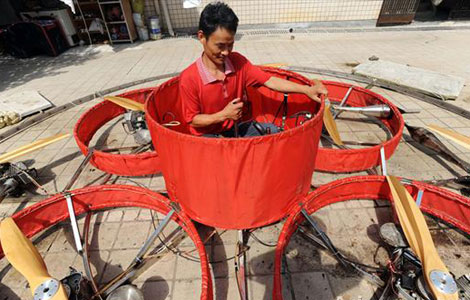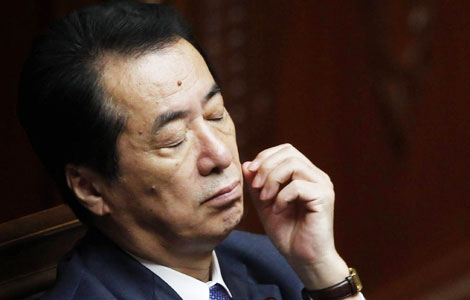Source of Yellow River stops shrinking
Updated: 2011-08-24 07:55
(China Daily)
|
|||||||||||
XINING - A sprawling lake area on the Qinghai-Tibet Plateau has expanded after the government took steps six years ago to prevent it from shrinking because of its deteriorating environment.
Sanjiangyuan, an area that is the source of China's three most important rivers, has increased in size by 245 square kilometers in the past few years, said Li Xiaonan, deputy director of the Sanjiangyuan Ecological Preservation and Construction Office.
In particular, the twin lakes that supply 49 percent of the headwaters of the Yellow River have expanded by 166 square kilometers from 2003, when they were at a record small size of 1,071 square kilometers.
The situation was then so dire that the headwaters of the Yellow River briefly dried up.
Sanjiangyuan also supplies the headwaters of two other prominent rivers - the Yangtze River and the Lancang River, which is called Mekong in Southeast Asia. In recent years, the source lakes have been shrinking as a result of environmental damage that the government blames on changes made by human beings and overgrazing by animals.
Out of a fear that the Yellow River might eventually dry up, the central government initiated a 7.5 billion yuan ($1.12 billion) project in 2005 to restore the environs of Sanjiangyuan. It took steps to prevent soil erosion, artificially increase the amount of rain that falls, forbid overgrazing and move herding families out of the region.
About 50,000 people, mostly ethnic Tibetans from herding families have been moved out in the past six years. Rockets that induce rain meanwhile increased the region's precipitation by 31 billion cubic meters, according to Li and Zhou Bingrong, a senior engineer with the provincial meteorology research institute.
Li said work began in 2005 to repair the fragile plateau wetland. As a result, the Sanjiangyuan lake area is now able to hold more water, and the quality of that water has improved.
Xinhua
- Live Report: Gadhafi says withdrawal tactical move
- Quake hits US, no major damage
- Tougher penalties for sea pollution
- 5 detained over toxic waste dumping
- 26 trapped after coal mine floods
- Japan Prime Minister on way out
- Live Report: Gadhafi on the run as rebels fight
- More trains slow to improve safety
Hot Topics
Anti-Gay, Giant Panda, Subway, High Speed Train, Coal Mine, High Temperature, Rainstorm, Sino-US, Oil Spill, Zhu Min
Editor's Picks

|

|

|

|

|

|






